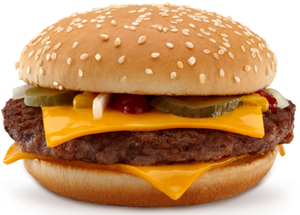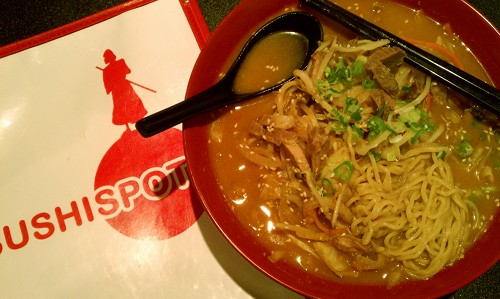December 31, 2010

Unlike other Asian cultures, the Japanese don't celebrate Lunar New Year. Instead, they celebrate the Western calendar New Year, January 1, and some of the special traditions for the holiday, called "
Oshogatsu," have been handed down to Japanese Americans over the past century.
Japanese New Year's traditions are different from Western (or at least, American) ones: First of all, New Year's Eve isn't the big holiday, and the focus isn't on partying and waiting until midnight on Dec. 31 to watch the Times Square ball slide down, or to see fireworks or make hearty toasts. A lot of us do, because we go to parties to celebrate with friends -- after all, we
are Japanese
American.
In Japan, New Year's Eve and the days leading up to it are all about cleaning house, cleaning yourself and your soul, putting your business in order to prepare for the new year. It doesn't sound like much fun. And traditionally, people spend New Year's Eve quietly at home with family or friends. There are events, such as the release of thousands of balloons at Tokyo's Zojoji temple to pray for world peace -- pretty different from Times Square, huh? My mom's hometown of Nemuro is at the easternmost tip of the northern island of Hokkaido, and thousands of people gather on Cape Nosappu outside of town past midnight on January 1, to see the first sunrise of the new year in Japan. Buddhist temples ring their bell at midnight to mark the start of the new year, a very spiritual sound.
There are other festive events throughout Japan too, with live music and fireworks just like in the US -- it's not all traditional.
By the time the clock ticks over into the new year, Japanese have spruced up their house with traditional decorations made of pine, bamboo and plum trees to bring good luck. On New Year's Eve, families settle in with special
toshikoshi soba noodles to bring long life, and watch Kohaku Utagassen, a men versus women singing contest that's like karaoke on serious steroids featuring the country's biggest enka (a traditional style of pop music) and J-pop stars. This show has been aired on New Year's Eve since the end of World War II, and for decades it was Japan's equivalent of the Super Bowl in popularity.
Denver's Japanese community has held a Kohaku Utagassen competition for many years too.
The main event in Japan isn't New Year's Eve and the midnight celebrations. It's New Year's Day, or
Oshogatsu, and not because of college sports contests. The first days of January represent the start of a clean slate for everyone, and a time to celebrate family and friends by visiting people and wish everyone well. January 1 is also the day for a family feast that can put American Thanksgiving to shame.








 Unlike other Asian cultures, the Japanese don't celebrate Lunar New Year. Instead, they celebrate the Western calendar New Year, January 1, and some of the special traditions for the holiday, called "Oshogatsu," have been handed down to Japanese Americans over the past century.
Japanese New Year's traditions are different from Western (or at least, American) ones: First of all, New Year's Eve isn't the big holiday, and the focus isn't on partying and waiting until midnight on Dec. 31 to watch the Times Square ball slide down, or to see fireworks or make hearty toasts. A lot of us do, because we go to parties to celebrate with friends -- after all, we are Japanese American.
In Japan, New Year's Eve and the days leading up to it are all about cleaning house, cleaning yourself and your soul, putting your business in order to prepare for the new year. It doesn't sound like much fun. And traditionally, people spend New Year's Eve quietly at home with family or friends. There are events, such as the release of thousands of balloons at Tokyo's Zojoji temple to pray for world peace -- pretty different from Times Square, huh? My mom's hometown of Nemuro is at the easternmost tip of the northern island of Hokkaido, and thousands of people gather on Cape Nosappu outside of town past midnight on January 1, to see the first sunrise of the new year in Japan. Buddhist temples ring their bell at midnight to mark the start of the new year, a very spiritual sound.
There are other festive events throughout Japan too, with live music and fireworks just like in the US -- it's not all traditional.
By the time the clock ticks over into the new year, Japanese have spruced up their house with traditional decorations made of pine, bamboo and plum trees to bring good luck. On New Year's Eve, families settle in with special toshikoshi soba noodles to bring long life, and watch Kohaku Utagassen, a men versus women singing contest that's like karaoke on serious steroids featuring the country's biggest enka (a traditional style of pop music) and J-pop stars. This show has been aired on New Year's Eve since the end of World War II, and for decades it was Japan's equivalent of the Super Bowl in popularity.
Unlike other Asian cultures, the Japanese don't celebrate Lunar New Year. Instead, they celebrate the Western calendar New Year, January 1, and some of the special traditions for the holiday, called "Oshogatsu," have been handed down to Japanese Americans over the past century.
Japanese New Year's traditions are different from Western (or at least, American) ones: First of all, New Year's Eve isn't the big holiday, and the focus isn't on partying and waiting until midnight on Dec. 31 to watch the Times Square ball slide down, or to see fireworks or make hearty toasts. A lot of us do, because we go to parties to celebrate with friends -- after all, we are Japanese American.
In Japan, New Year's Eve and the days leading up to it are all about cleaning house, cleaning yourself and your soul, putting your business in order to prepare for the new year. It doesn't sound like much fun. And traditionally, people spend New Year's Eve quietly at home with family or friends. There are events, such as the release of thousands of balloons at Tokyo's Zojoji temple to pray for world peace -- pretty different from Times Square, huh? My mom's hometown of Nemuro is at the easternmost tip of the northern island of Hokkaido, and thousands of people gather on Cape Nosappu outside of town past midnight on January 1, to see the first sunrise of the new year in Japan. Buddhist temples ring their bell at midnight to mark the start of the new year, a very spiritual sound.
There are other festive events throughout Japan too, with live music and fireworks just like in the US -- it's not all traditional.
By the time the clock ticks over into the new year, Japanese have spruced up their house with traditional decorations made of pine, bamboo and plum trees to bring good luck. On New Year's Eve, families settle in with special toshikoshi soba noodles to bring long life, and watch Kohaku Utagassen, a men versus women singing contest that's like karaoke on serious steroids featuring the country's biggest enka (a traditional style of pop music) and J-pop stars. This show has been aired on New Year's Eve since the end of World War II, and for decades it was Japan's equivalent of the Super Bowl in popularity.